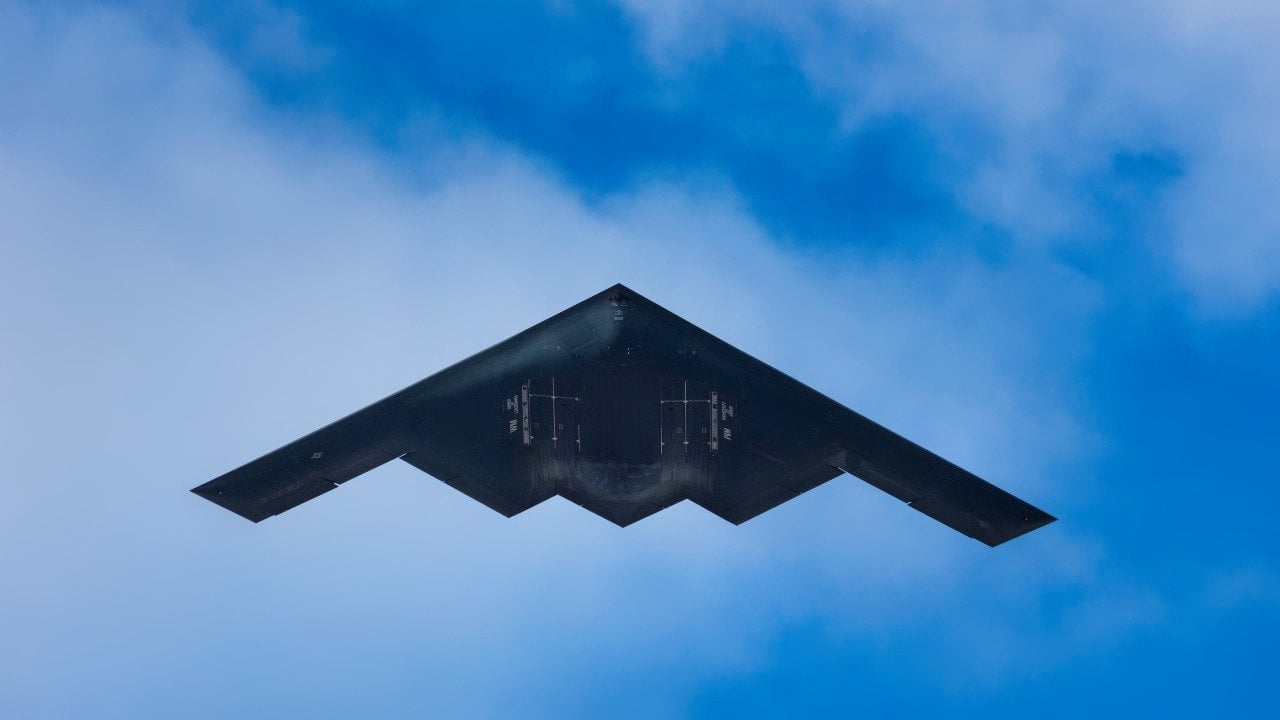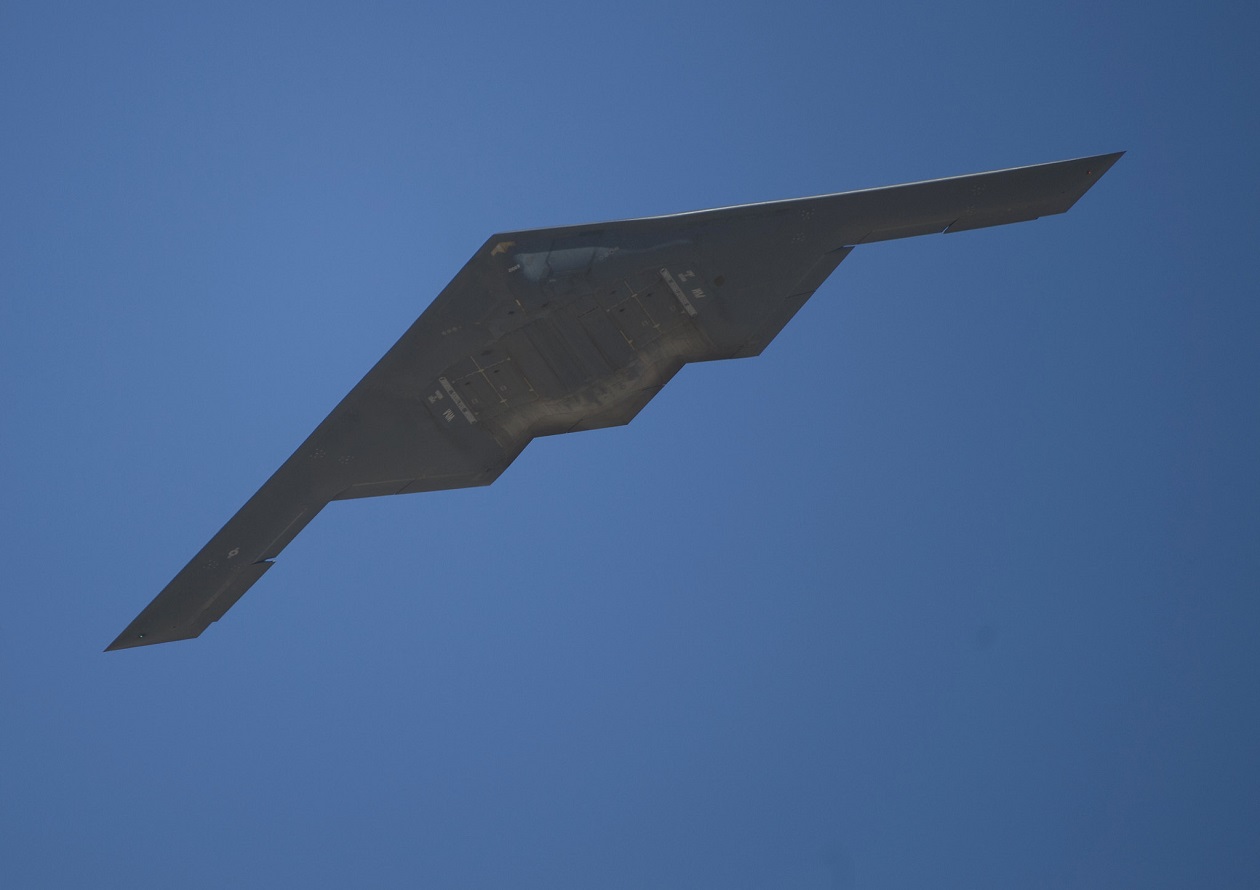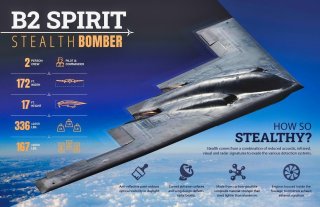How a B-2 Spirit Stealth Bomber Crashed and Was Destroyed
On February 23, 2008 at Andersen Air Force Base in Guam, two pilots from the 509th Bomb Wing from Whiteman Air Force Base were on board the B-2 Spirit of Kansas (89-0127) and were forced to eject.
B-2 Accident: Since the U.S. Air Force’s B-2 Spirit’s introduction to service more than three decades ago, only one of these stealth bombers has ever been lost in an accident. Perhaps surprisingly, it wasn’t combat or military drills that downed this formidable airframe, but a routine flight. Following the loss of this B-2, only 20 of these essential bombers remain in the service. The Spirit may be old, but the platform continues to play a key role in America’s long-range strike arsenal.
An overview of the B-2 accident in 2008
On February 23, 2008 at Andersen Air Force Base in Guam, two pilots from the 509th Bomb Wing from Whiteman Air Force Base were on board the B-2 Spirit of Kansas (89-0127) and were forced to eject. The billion-dollar airframe was taking off with three others on their final flight out of Guam following a four-month-long deployment when the incident occurred.
In a video shared on social media, the aircraft is depicted speeding down the runway and beginning to gain some altitude when the wing hits the ground and bursts. The bomber is then seen slamming against the runway in a fume of gray clouds and smoke. While the two crew members on board the bomber were able to eject, the airframe was destroyed.
According to an Air Combat Command (ACC) accident investigation report that was released about four months after the incident occurred, distorted data produced by the bomber’s air data system was to blame.
As detailed by The Aviation Geek Club, moisture in the B-2’s Port Transducer Units (PTUs) during air data calibration skewed the information in the airframe’s air data system, resulting in the inability of the flight computers to compute accurate airspeeds and an angle of attack upon takeoff. In addition to this issue, the investigation outlined that the ineffective communication of vital information surrounding a technique of turning out pitot heat in order to combat moisture was partially to blame.
An Air Force Times report noted that no munitions were on the airframe during the incident. However, classified material had reportedly been loaded onto the bomber the morning it was due to return to Whiteman Air Force Base from Guam. The commander of the 509th Bomb Wing temporarily suspended flying operations for the remaining B-2 bombers to review procedures in a “safety pause.” Six Boeing B-52s were deployed to replace the Spirits, and by April, all B-2s returned to flight status.

The history of the B-2 bomber
The concept of stealth airframes dates back to the early 1970s when aircraft engineers discovered a method to evade interceptors and missiles that the military could employ. The ability to fly undetected by deflecting or absorbing radar signals became the basis for the B-2 bomber.
Around this time, the Defense Advanced Research Projects Agency worked together with American aviation companies to ascertain the largest radar cross-section an airframe could possess while remaining undetectable by enemy aircraft. The Spirit was the culmination of this collaboration.
Notably, the Spirit can fly to any point in the world within hours. The formidable bomber is capable of all-altitude attack missions with long-ranges and is armed to the teeth. Two separate weapons bays are positioned in the center of the bomber. The B-2 can carry an array of both conventional and nuclear weapons in addition to other munitions with the weight limit or 40,000 pounds. The airframe can carry up to 16 satellite-guided joint direct attack munition (JDAM) missiles.
What makes the Spirit such a powerhouse?
Over the years, several upgrades have been incorporated into the B-2 for the airframe to retain an edge over competitors. In 2007, manufacturer Northrop Grumman was awarded a contract to implement the Boeing massive ordnance penetrator weapon on the Spirit.

As detailed by Air Force Technology, “The MOP is GPS-guided, contains 2,400kg (5,300lb) of explosive and is designed to penetrate hardened, deeply buried targets. B-2 is capable of carrying two MOP weapons, one in each weapons bay.” Another recent upgrade incorporated on the Spirit is the generic weapons interface system (GWIS). This digital software package enables the bomber to carry a variety of stand-off weapons and direct attack munitions on a single sortie. In terms of radar, the Spirit is nearly unparalleled. The Raytheon AN/APQ-181 convert strike raider was added to the B-2 in the early 2000’s, followed by the incorporation of the then-new Ku-band active electronically scanned array (AESA) antenna.

Over its thirty-plus years in service with the U.S. Air Force, the Spirit has seen combat in Iraq, Kosovo and Afghanistan. Although this stealth bomber remains a vital deterrent in the U.S. arsenal, it is expected to be replaced by the B-21 Raider sometime in the early 2030s.
China is also working towards developing its next-generation stealth bomber, making the timely introduction of the Raider even more significant.
About the Author
Maya Carlin, National Security Writer with The National Interest, is an analyst with the Center for Security Policy and a former Anna Sobol Levy Fellow at IDC Herzliya in Israel. She has by-lines in many publications, including The National Interest, Jerusalem Post, and Times of Israel. You can follow her on Twitter: @MayaCarlin.
Image Credit: Creative Commons.


